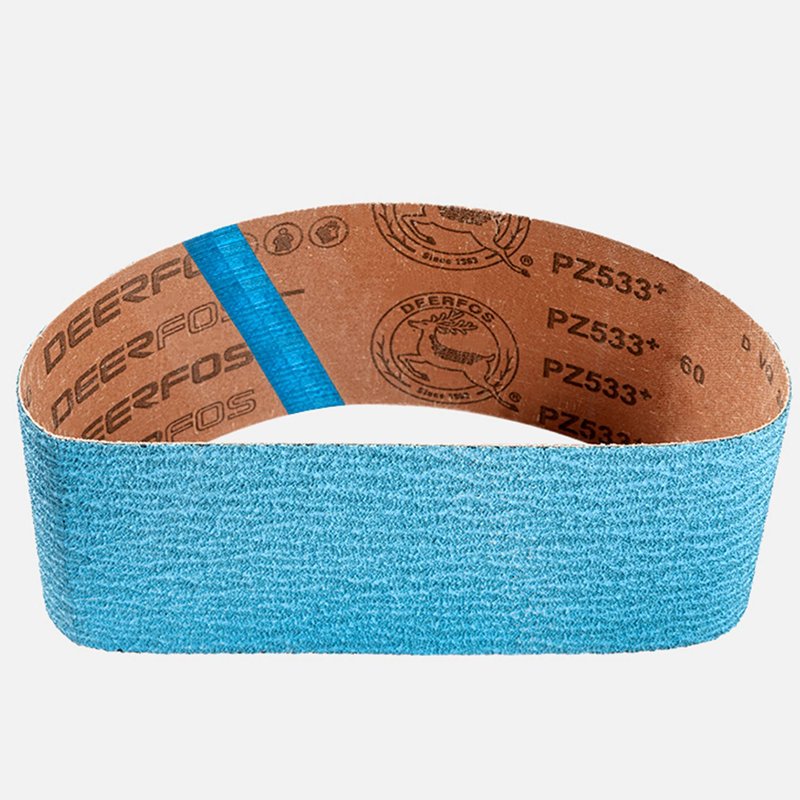Troubleshooting & Tips for sanding belt
If you’re running a metal polishing workshop or manufacturing stainless steel components, few things are more frustrating than a sanding belt snapping mid-job. Not only does it slow production, but it also increases costs and can even damage the workpiece or sanding machine. So why do sanding belts keep breaking, and what can you do to prevent it? Let’s explore the top causes and practical solutions tailored for small to mid-sized metal processing businesses.
1. Poor Belt Joint Quality
The most common cause of belt failure is a weak or faulty joint. If the belt’s joint is poorly made, misaligned, or not properly cured during production, it will fail quickly under tension.
Solution: Choose belts with professionally reinforced joints such as butt-splice .
Use high quality viscose instead of regular materials,Use belts with reinforced joints (e.g., Z-joints or S-joints) for added durability.
At sandingbeltdepot.com[SDdepot], all sanding belts are inspected for joint strength and balance before delivery.Solution:
Adjust your machine’s belt tension to the recommended PSI
Choose belts with professionally reinforced joints such as butt-splice .
Use high quality viscose instead of regular materials,
At sandingbeltdepot.com(SDdepot), all sanding belts are inspected for joint strength and balance before delivery.

2. Wrong Belt Tension or Tracking
Improper tensioning can overstress the belt. If it’s too tight, it increases the risk of snapping; if it’s too loose, the belt may drift or bunch up, leading to uneven wear.
Solution: Adjust your machine toAlways double-check your sanding belt size against machine specs. Make sure tracking and alignment are correctly calibrated. maintain optimal tension. Always follow the sander manufacturer’s guidelines. Regularly check for proper tracking and belt alignment.
3. Overheating During Operation
Excessive heat can weaken the adhesive at the joint and degrade the backing material—especially when grinding stainless steel or alloy parts.
Solution: Choose Zirconia abrasive belts or Ceramic sanding belts with advanced cooling coatings. Consider wet grinding if heat buildup is a recurring issue.Use ceramic or zirconia sanding belts with active cooling coatings. They’re designed to handle high heat and reduce burn marks or warping.
4. Incorrect Grit or Abrasive Type
Using a grit that’s too fine for heavy stock removal, or an abrasive not suited for hard metals, can cause excessive friction and stress on the belt.
Solution: Match the grit and abrasive type to your application. For heavy-duty metal grinding, zirconia or ceramic belts (40–80 grit) perform better than standard AO belts. Alumina sanding strips for wood materials should not be used to grind hard metals
5. Belt Stored in Poor Conditions
Humidity, direct sunlight, and extreme temperatures can dry out or degrade the belt’s backing and adhesive.
Solution: Store belts in a dry, temperature-controlled environment. Keep them in original packaging until use.
- Using Worn-Out Contact Wheels or Platens
A worn or uneven contact wheel can damage the belt from underneath, especially near the joint area.
Solution: Regularly inspect and replace contact wheels or platens to ensure consistent pressure and flatness.
7.Low-Quality Belts
Generic or low-grade belts often have poor joint construction and inconsistent abrasive distribution, increasing the risk of breakage.
Solution: Choose belts from reliable suppliers. At SDdepot, we supply ISO-certified Zirconia and Ceramic sanding belts with custom sizing and reinforced joints.
🛠️ Final Thoughts:
Frequent sanding belt breakage isn’t just a nuisance—it’s a sign of deeper process inefficiencies. By understanding and resolving these common causes, you can increase productivity, reduce downtime, and achieve smoother grinding results.
👉 Need help choosing the right abrasive belt for your application? [Contact our expert team] for free technical support and samples.